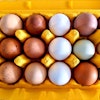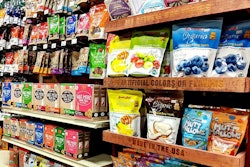
The U.S. has long led the global pet food industry as the largest market, and now it’s added another, more dubious, #1 status: as the leader in pet food inflation. At the end of September 2022, pet food inflation in the U.S. reached 14% year over year (YOY), outpacing that of human food (“food at home” in U.S. government parlance) at 13% and the overall U.S. consumer price index (CPI) of 8.2%.
Unfortunately, this scenario is playing out to various extents in other pet food markets as well, though to date, the U.S. is one of the few in which pet food has surpassed human food in terms of inflation.
Pet food inflation in North America
The U.S.’s neighbors to the north and south are experiencing inflation in different ways. For Canada, another developed market, overall inflation stood at 6.9% YOY—which seems relatively positive, except that inflation for groceries (human food) reached 11.4%, the highest since August 1981. Pet food, included in a category with other pet supplies, faced 9.5% inflation.
Mexico, on the other hand, is a developing market that has seen its pet food inflation drop; it was still at a fairly high 9.1% YOY in September, but that’s down from a summer 2022 high of 11.1%, according to Ivan Franco of Triplethree International. Overall in Mexico, inflation stood at 8.7% in September, with human food at a whopping 14.55% YOY. Compared to that, the pet food figure indeed looks positive.
Further south, in Brazil, overall inflation has declined to 7.2% YOY, with human food at 11.7%. (I was unable to find inflation data for pet food or pet care—too bad, considering the size of the Brazilian pet food market.)
Europe: Too close to the action
Given its proximity to Ukraine and its previous reliance on Russian gas supplies, it’s no surprise that the European Union (E.U.) is also struggling with continually rising inflation, as countries there must combat a fraught energy situation (and its concomitant costs) along with ongoing supply chain disruptions initially started by the COVID-19 pandemic and now exacerbated by the Russian invasion of Ukraine.
In September, overall inflation in the E.U.—its CPI equivalent is the harmonised index of consumer prices, or HICP—reached 9.9% YOY. (In June, when I last wrote about it, it stood at 8.6%.) At the same time, human food inflation hit 14.1%, while inflation for pets and related products (including pet food but excluding veterinary) rose to 12.2%, up from 8.8% in June.
Now outside the E.U. thanks to Brexit, the U.K.’s numbers don’t look much better: 10.1% inflation overall, plus an even worse 14.6% for human food and 13.4% for pet care (including pet food), approaching the U.S. figure.
Slightly healthier situation for Asia-Pacific?
Looking at a selection of markets in other regions presents a mixed, though slightly more positive picture in the aggregate. For Australia, another sizable pet food market, overall inflation reached 6.8% YOY in September, with human food at 9.3%. The most recent figure for pet care (including pet food) is from June 1, 2022, when inflation stood at 11.3%--so, as in the U.S., also surpassing human food, though when September data for pet care is available, it might show a decrease from that June amount.
In New Zealand, inflation was at 7.2% YOY in September and human food inflation at 8.3%. A total pet food figure was difficult to find, though a government-issued chart did show a sample: The weighted average price of a can of pet food in a supermarket was NZ$3.68 in September, up from NZ$3.59 in June 2022, a 2.5% increase in just three months. Meaning prices are still rising there.
A similar situation seems to be playing out in South Korea, though at a lower level: overall inflation at 5.6% YOY in September and human food inflation at 7.8%. For pet food, the average price per unit reached US$3.76 in July 2022, up from US$3.61 in 2021, so a YOY rise of 4.2%.
All this means that pet owners the world over are dealing with steadily escalating prices for food for their furry family members, on top of higher costs for their own food. Yet, this is a selective sample presented here: If anyone knows of better news somewhere in the world regarding pet food inflation, please share that information! We could all use some good news.

















